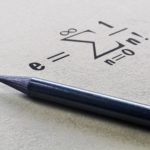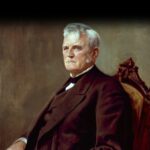Since 2016, National Periodic Table Day has been celebrated on February 7 to pay tribute to the chart pasted in science classrooms that saved us from flunking high school chemistry! The idea to dedicate a day to toast the periodic table and its scientific inventions was conceived in the clever mind of a chemistry teacher, Mr. David T. Steineker, and we cannot help but assume that he had some sneaky ulterior (read: academic) motives behind it. Whatever the reasons, on this day, we celebrate and glorify the periodic table and its scientists in being the critical building elements (literally) for the continuing discoveries in science. Find scholarships in different areas of science and discover your potential in the subject.
History of National Periodic Table Day
If it wasn’t for the periodic table, we wouldn’t have passed our chemistry exams as easily as we did. Although, come to think of it, if it wasn’t for the blocked chart, we wouldn’t have found chemistry so tough in the first place either! But by the same token, we cannot forget the breakthroughs and advancements that the periodic table has brought to the field of chemistry. On February 7, 2016, an author, inventor, and chemistry teacher at Jefferson County Public School in Kentucky, Mr. David T. Steineker, founded the National Periodic Table Day to toast the publishing of scientist John Newlands’ periodic table of elements on February 7, 1863. Russian chemist and scientist, who is best remembered for formulating the present-day periodic table in 1869, Dmitri Mendeleev, was also born a day before February 7. Mr. Steineker came up with the idea to give it a day to remember and challenge the discoveries of the periodic table of elements for which more than one scientist has been credited for its inception since the 19th century. It is unethical to not recognize the first groundwork of the periodic table that was laid out by German chemist Johann Dobereiner back in 1817. Together with J.J. Berzelius, the Swedish chemist, Doberiener discovered the first catalyst by experimenting with hydrogen ignition and potassium powder. He organized elements with similar properties into groups of three, which formed the basis for modifications by other scientists. Then came John Newlands who was an English chemist. He published the first periodic table in 1863, which organized 56 elements into 11 groups. While Newlands’ periodic table was slightly flawed, he was the first scientist to introduce the ‘Law of Octaves.’ National Periodic Table Day, thus, honors the scientists who created a simplified model that gives us an easy reference and helps chemists anticipate the behavior of elements within a glance.
National Periodic Table Day timeline
An experimental physicist Henry Moseley discovers that each element had a separate proton number, leading to the addition of 4 new chemical elements.
John Dobereiner organizes elements into a triad (groups of three) based on similar properties.
John Newlands is the first scientist to discover that properties of the elements have a pattern to them.
Dmitri Mendeleev publishes the periodic table containing 60 of the 100 elements we know today, arranging them according to their atomic masses.
Scottish chemist William Ramsay discovers four noble gasses (neon, argon, krypton, and xenon) and wins a Nobel prize.
National Periodic Table Day FAQs
Why was 2019 declared as the International Year of the Periodic Table by Unesco?
The year 2019 marked the 150th anniversary of its creation by Russian scientist Dmitri Mendeleev.
Who is the father of the periodic table?
Dmitri Mendeleev.
Why is the periodic table the shape it is?
By having the periodic table laid out in the shape of a castle, scientists can easily observe each element and its properties.
National Periodic Table Day Activities
-
Play the Periodic Table Day trivia challenge
Read up a bit about the periodic table and play a trivia challenge with friends and family. Ask facts and figures such as elements making up the rust compound, the symbol for potassium, or perhaps the atomic number of argon.
-
Play a periodic table scrabble game!
Grab a pen and paper, gather your friends, and put a periodic table chart in the middle. Come up with proper English language words out of the symbols of elements and write them down. The one who ends up with the most points wins the game. But how do we lay out the rules for scoring? Of course, the atomic numbers of each element! For example, the word ‘CaSe’ uses elements only and tops up 54 points to your name.
-
Sing the periodic table song with friends
Have you ever sung the periodic table song? Well, now is the day! It might be irritating and hilarious, but it is surely a memorable way to relive the dreaded chem-exam days!
5 Facts About The Periodic Table That Will Blow Your Mind
-
There is one missing letter in it
The periodic table has all the letters of the alphabet except the letter J.
-
Battery polarity was used to weigh atoms
At that time, scientists used batteries to separate all 63 atoms according to their polarities, and then each atom was weighed in separate containers.
-
Elements are named after various things
Uranium was named after the discovery of Uranus, whereas argon is taken from the Greek word ‘argos’ meaning ‘idle.’
-
The king of the periodic table is carbon
Carbon is considered the king because it can form four covalent bonds with other elements and with itself.
-
Francium is the rarest element of earth
There are only a few ounces of francium left on Earth.
Why We Love National Periodic Table Day
-
Building blocks of chemistry
The periodic table is easily “chemistry’s most important breakthrough.” From providing a molecular understanding of elements that make up the matter to engineering biomaterials and other complex applications, we owe it all to the periodic table.
-
Chemical synthesis of Taxol compound treats cancer
The rare compound Taxol is found in Pacific yew trees. It has a therapeutic effect on cancer, which is why chemists have found a semisynthetic version of Taxol widely used today to treat cancer.
-
Liquid crystal displays for flat screens
The reason why we have flat screens for televisions, smartphones, and monitors is because of a molecule called 5CB. It helped us switch to liquid crystal displays from cathode ray tubes.
National Periodic Table Day dates
| Year | Date | Day |
|---|---|---|
| 2023 | February 7 | Tuesday |
| 2024 | February 7 | Wednesday |
| 2025 | February 7 | Friday |
| 2026 | February 7 | Saturday |
| 2027 | February 7 | Sunday |








































